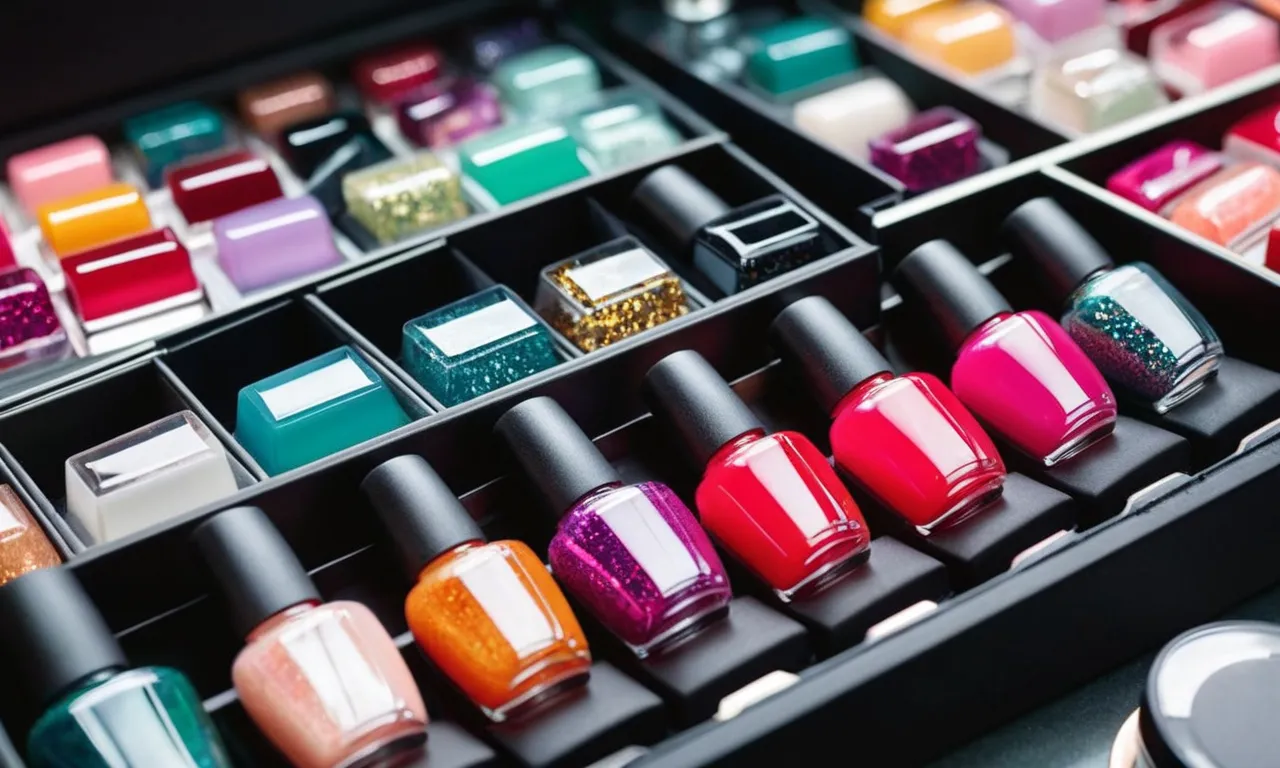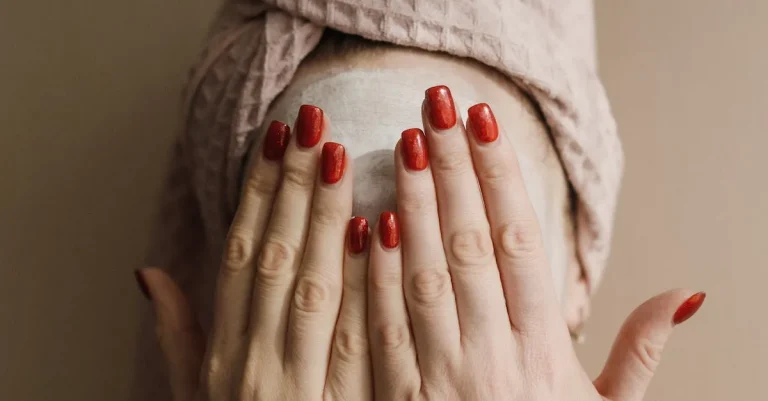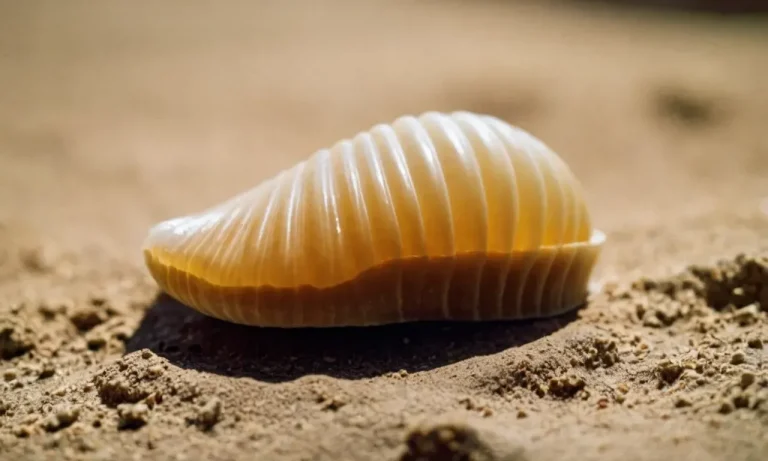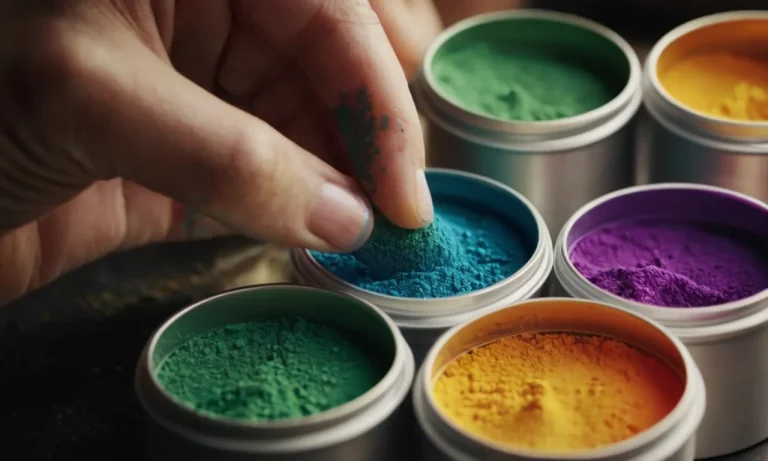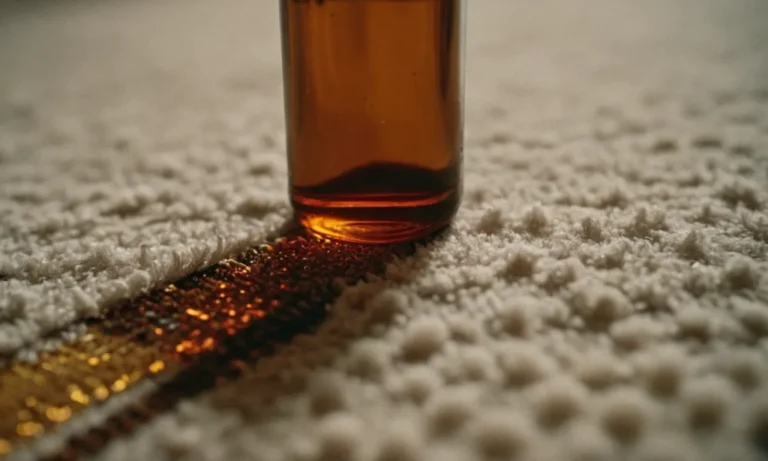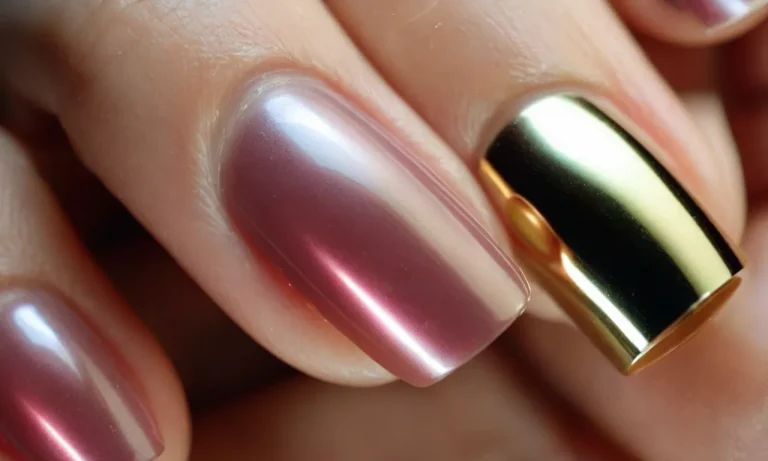Gel Vs Acrylic Nail Kits: Which Is Better For You?
Nail art has become increasingly popular over the years, with gel and acrylic being two of the most common enhancement options. If you’re looking to do your nails at home, you’ll need to decide between buying a gel or acrylic nail kit.
If you’re short on time, here’s a quick answer to your question: Gel nail kits are easier to apply and remove at home, while acrylic kits produce a more durable and long-lasting manicure.
In this comprehensive guide, we’ll compare gel and acrylic nail kits to help you determine which is the better choice for your individual needs and preferences.
What’s Included in Gel and Acrylic Nail Kits
Gel nail kit contents
Gel nail kits contain everything you need to achieve a professional gel manicure at home. Some common items include:
- LED or UV lamp – to cure or harden the gel polish
- Gel polish – available in various colors and finishes
- Nail primer – preps the nails for gel application
- Nail dehydrator – removes moisture from the nails
- Buffer and file – shapes and smoothens nails
- Cuticle pusher – pushes back cuticles for a neat look
- Nail forms – helps apply gel to natural nails
- Top and base coat – protects the color and nails
- Nail cleanser – removes sticky residue after curing
- Remover wraps – removes gel polish easily
Gel kits focus more on the polish and may skip tools like clippers or cuticle remover. But they contain the core items for a complete gel manicure.
Acrylic nail kit contents
Acrylic kits have supplies to sculpt artificial nail extensions from acrylic powder and liquid. Common items are:
- Acrylic powders – available in clear, pink, and white shades
- Acrylic liquid – bonds the powder to form nails
- Nail forms – aids application on natural nails
- Nail tips – pre-shaped artificial nails
- Primer – ensures acrylic adheres properly
- Brush – applies powder and liquid mixture
- Nail file and buffer- shapes and refines nails
- Nail clippers and cuticle pusher
- Nail dehydrator and cleanser
- Top and base coat
So acrylic kits contain sculpting supplies in addition to basic manicure tools. This allows you to extend your natural nails with acrylics.
| Type | Main Purpose |
|---|---|
| Gel kits | Apply gel polish for chip-free manicures |
| Acrylic kits | Sculpt artificial nail enhancements |
While gel kits focus on polish and color, acrylic ones excel at nail enhancements and extensions. But both can create beautiful, long-lasting nail looks!
Application and Removal
Applying gel nails
Applying gel nail polish is a multi-step process that requires some skill. Here are the basic steps:
- Prep the natural nail by filing and buffing to create a smooth surface.
- Apply a dehydrator and primer to clean the nail and help the gel adhere.
- Apply a thin layer of gel polish base coat and cure it under an LED or UV lamp for 30-60 seconds.
- Apply two thin coats of colored gel polish, curing each layer under the lamp.
- Finish with a gel top coat to seal and protect the manicure, curing once more.
The whole gel manicure process takes around 30-40 minutes. The finished gel nails will be super glossy and chip-resistant. With proper application and care, a gel manicure can last up to 2-3 weeks on natural nails!
Removing gel nails
Removing gel nails requires a bit of effort because the gel is cured onto the natural nail:
- File off the top layer of the gel polish.
- Soak cotton pads in pure acetone and place them on each nail, wrapping the tips in foil.
- Let the acetone work for 10-15 minutes to break down the gel layers.
- Gently push back the cuticles and scrape away the soaked gel with a cuticle pusher.
- Buff the natural nails lightly to remove any remaining residue.
- Apply cuticle oil to hydrate the nails.
The whole removal process takes 20-30 minutes. Be patient and do not peel or pick at the gels, as this can damage the natural nails. With acetone and some elbow grease, you’ll have bare, healthy nails again!
Applying acrylic nails
Getting acrylic nails applied by a professional involves several steps:
- The natural nail is prepared by cleansing, filing, and applying dehydrator.
- Nail tips are glued on for length and structure.
- Acrylic powder and liquid are combined and applied to build and shape the nails.
- The acrylic is shaped with tools and smoothed to the desired length and appearance.
- Finally, the nails are buffed and polished for a finished look.
The application takes around an hour. Acrylics require more skill to apply than gels. The finished acrylic nails are ultra durable and can last 2-4 weeks with fill-ins. They allow for more dramatic shapes and lengths too!
Removing acrylic nails
Taking off acrylics is a bigger job:
- File off the top layer of nail polish.
- Use clippers to carefully cut through the acrylic and glue to remove the tip.
- Gently file the remaining acrylic off the natural nail.
- Soak in acetone for 10-15 minutes to dissolve any acrylic residue.
- Push back cuticles and buff away the last bits of acrylic.
- Apply cuticle oil or moisturizer to condition the natural nails.
Removing acrylics takes 30-45 minutes. Work slowly and carefully to avoid excessive filing that could thin and damage the natural nails. With some TLC, your nails will be back to a healthy, natural state!
Durability and Longevity
When it comes to durability and longevity, gel and acrylic nail kits have their pros and cons. Here is an overview of how they compare:
Gel Nail Kits
Gel nail kits can be very durable and long-lasting compared to regular nail polish. The gel formula is designed to cure under UV or LED light, creating a hard, glossy finish that can last up to 2-3 weeks without chipping or cracking. Factors that affect longevity include:
- Proper application technique – Applying gel polish thinly and curing each layer fully allows for optimal durability.
- Nail prep – Filing and buffing the nails first creates a smooth surface for gel to adhere to.
- Upkeep – Touch-ups and fill-ins every 2-3 weeks help maintain the gel manicure.
- Removal process – Soaking gel off properly without filing or picking avoids nail damage.
Acrylic Nail Kits
Acrylic kits allow you to sculpt, extend, and customize the length and shape of nails for long-lasting enhancement. The acrylic powder and liquid polymerize into a plastic-like material that is very hard and durable. With proper application and fill-ins, a full set can last 4-6 weeks or more.
Longevity depends on:
- Nail prep – Roughing up the nail surface helps acrylic adheres better.
- Proper sculpting technique – Applying the right ratio of powder to liquid avoids cracking or lifting.
- Maintenance – Filling in new growth every 2-4 weeks prevents breakage.
- Removal – Never peel or pick acrylics off, as this can damage the natural nails.
The Winner: Acrylics
Cost Comparison
When it comes to choosing between gel or acrylic nail kits, one of the biggest factors for many people is cost. Acrylic and gel nail kits can vary widely in price depending on the quality, ingredients, and brand. Here’s an overview of the cost differences between gel and acrylic DIY kits.
Initial Costs
Gel kits tend to be more expensive upfront than acrylic kits. The average price of a basic gel polish starter kit ranges from $50-100, while you can find acrylic kits starting around $20-50. Here are some of the reasons gel kits cost more:
- Gel polishes are more expensive to manufacture than acrylic powders and liquids.
- Gel kits require a UV or LED lamp which adds to the upfront cost.
- High-end gel brands generally cost more than cheaper acrylic kits.
However, for just starting out, you can find affordable beginner gel kits for around the same price as acrylics if you don’t mind a lesser known brand. Overall, gel does require more initial investment.
Long Term Costs
When looked at over the long run, gels often end up being more cost effective than acrylics. Here’s why:
- Gel manicures last 2-3 weeks on average, while acrylics last 1-2 weeks. Less frequent fills means gel can save money over time.
- The gel polish itself is very thin, requiring fewer coats and using less product than building acrylics.
- Gel is gentler on natural nails, meaning less repairs needed versus acrylic damage.
Additionally, with gel kits you’re only replacing the polish bottles as they run out. With acrylics, you need to continually buy powder, liquid, primer, remover, tips, and more. The ongoing costs add up fast.
Cost Per Manicure
Looking at per manicure costs is another way to compare gel vs acrylics.
| Service | Average Cost at Salon |
|---|---|
| Gel manicure | $30-$50 |
| Acrylic full set | $50-$80 |
| Gel fill | $30-$40 |
| Acrylic fill | $30-$50 |
As you can see, the per service costs are quite comparable between gels and acrylics in a professional salon. DIY kits bring these costs way down for both options. But gels ultimately win out in cost efficiency with their longer wear and easier fill process.
Quality over Cost
At the end of the day, the costs should come second to choosing a product you feel confident in. Don’t sacrifice quality just to save money. With either gel or acrylic kits, opt for trusted brand names with good reviews.
Quality UV/LED lamps, sanitary tools, and non-toxic formulas lead to better results and healthier nails.
Aesthetics
When it comes to aesthetics, both gel and acrylic nail kits allow you to achieve beautiful, long-lasting nail looks. However, there are some differences in the aesthetics between the two options.
Length
Both gel and acrylic extensions allow you to lengthen your natural nails significantly. Acrylics are especially known for allowing very long nail extensions. Gels can also be used to create lengthy nails, though they may not be quite as sturdy at extreme lengths as acrylics.
Thickness
Acrylic nail extensions tend to be thicker and more rigid than gel extensions. This gives acrylics a very durable feel. Gels can be applied in thinner layers for a more flexible, natural look and feel.
Shine
Gel polish is known for an incredible high-shine finish. The gel itself has a glossy look, and gel top coats are designed to maximize shine. Acrylics can also be buffed to a beautiful shine, but they tend to have a more matte finish than gel.
Shape
Both gel and acrylic nails can be sculpted into whatever shape you desire – from squoval and oval to stiletto and coffin shapes. Gels may be a bit easier to create very sharp pointy shapes with than acrylics. But acrylics are extremely versatile when it comes to shaping as well.
Color
An extensive range of polish colors are available for both gel manicures and acrylics. Neutrals, brights, pastels – you name it! Gels and acrylics both allow you to match your nails to any outfit or mood.
Design
Gel and acrylic extensions are both great canvases for nail art. You can paint designs, embed glitters or rhinestones, and get creative with textures using either system. Elaborate nail art looks stunning on both gel and acrylic nails.
Enhancements
Gels and acrylics can both be used in conjunction with nail enhancements like tips, forms, and overlays to lengthen, strengthen or reshape the nails as desired. The enhancements help provide a foundation for building your gel or acrylic extensions.
When it comes to aesthetics, gels and acrylics both offer versatility. Gels may provide a more natural, flexible look, while acrylics are known for allowing extreme length and durability. But both systems can help you achieve beautiful, eye-catching nails that last.
Health and Safety Considerations
When it comes to gel and acrylic nail kits, there are some important health and safety issues to consider before deciding which option is best for you.
Allergic Reactions
Both gel and acrylic nail products contain chemicals that can cause allergic reactions in some people. Acrylics tend to have more potential allergens, as they contain traces of acrylate monomers like methyl methacrylate. Gels often contain methacrylates as well, but usually less than acrylics.
If you have sensitive skin or know you are allergic to these chemicals, gel may be the safer choice.
Nail and Cuticle Damage
Improper application and removal techniques with both gel and acrylic nails can damage the natural nail and surrounding skin. Filing the surface too aggressively or picking off the polish can thin the nails. Acrylics require more filing for application and fill-ins.
Gels usually protect the natural nail better if applied correctly. However, removing gels incorrectly can pull up layers of the nail.
Overexposure to UV lamps when curing gel polish has also been linked to nail plate damage and skin cancer risks. Always apply proper protection like finger cot tips and sunscreen beforehand.
Infection Risks
The tools used for professional gel and acrylic manicures cannot be fully sterilized at home. Reusing them without proper cleaning can cause bacterial and fungal infections around the nails and fingers. Acrylic kits tend to have more pieces that can harbor germs.
Opt for a gel system with disposable tips and supplies if you are concerned about infection control.
See a doctor right away if any pain, swelling, redness, oozing, or foul odors occur around the nail, which could signal an infection.
Ventilation Considerations
Working with gel and acrylic nail products requires proper ventilation to avoid inhaling traces of vaporized chemicals, which may cause headaches, dizziness, or asthma attacks. Acrylic powders tend to produce more airborne particles.
Turn fans on, open windows, avoid small enclosed rooms, and use dust masks when filing to minimize risks.
Pregnant women may also want to take extra precautions when using either type of chemistry because research on their safety is limited.
Taking the proper health and safety steps allows you to achieve beautiful nail looks with less worry over risks. Consider trying disposable gel polish strips if you want stunning manicures without much hassle or exposure to chemicals.
Conclusion
In summary, gel and acrylic nail kits both allow you to achieve beautiful nail enhancements at home. Gel kits are beginner-friendly and easier to maintain, while acrylics offer superior strength and longevity.
Consider your personal preferences, skill level, lifestyle and budget to decide which option is right for you.

